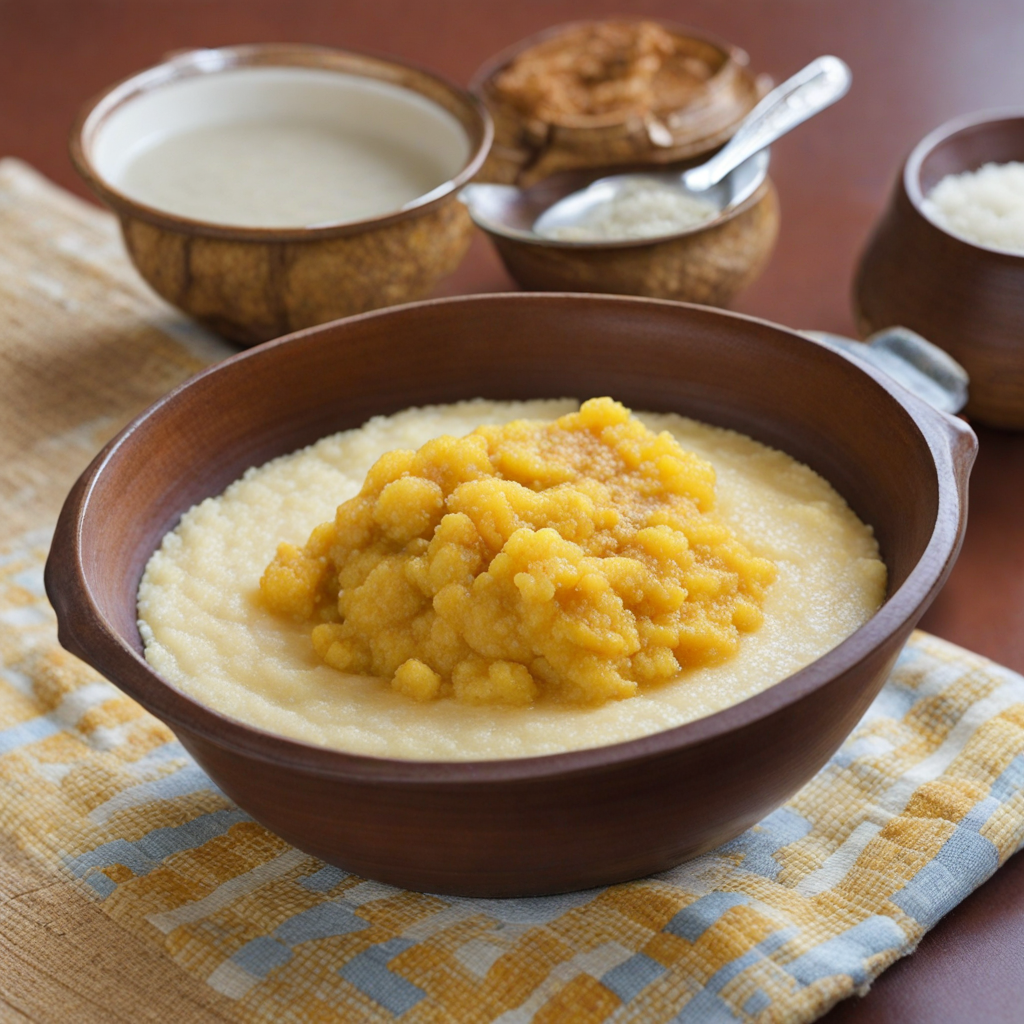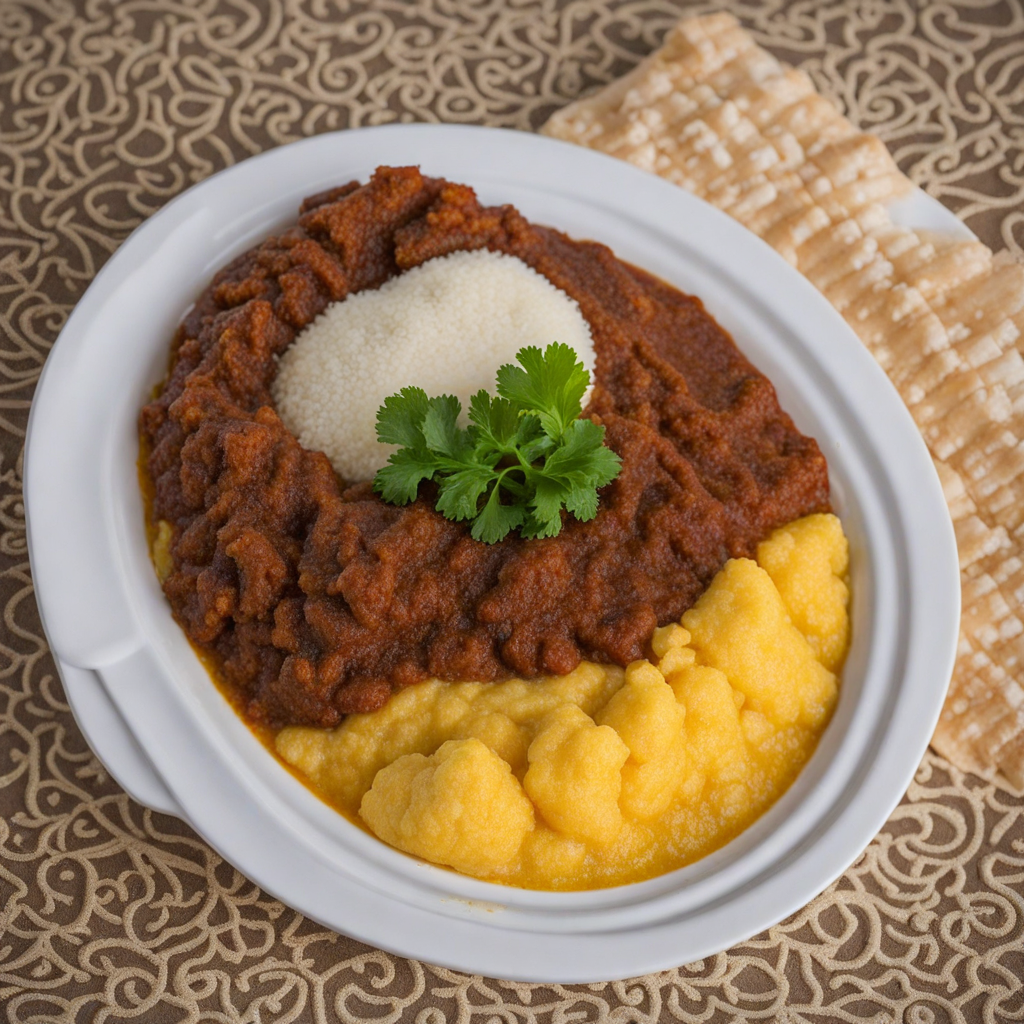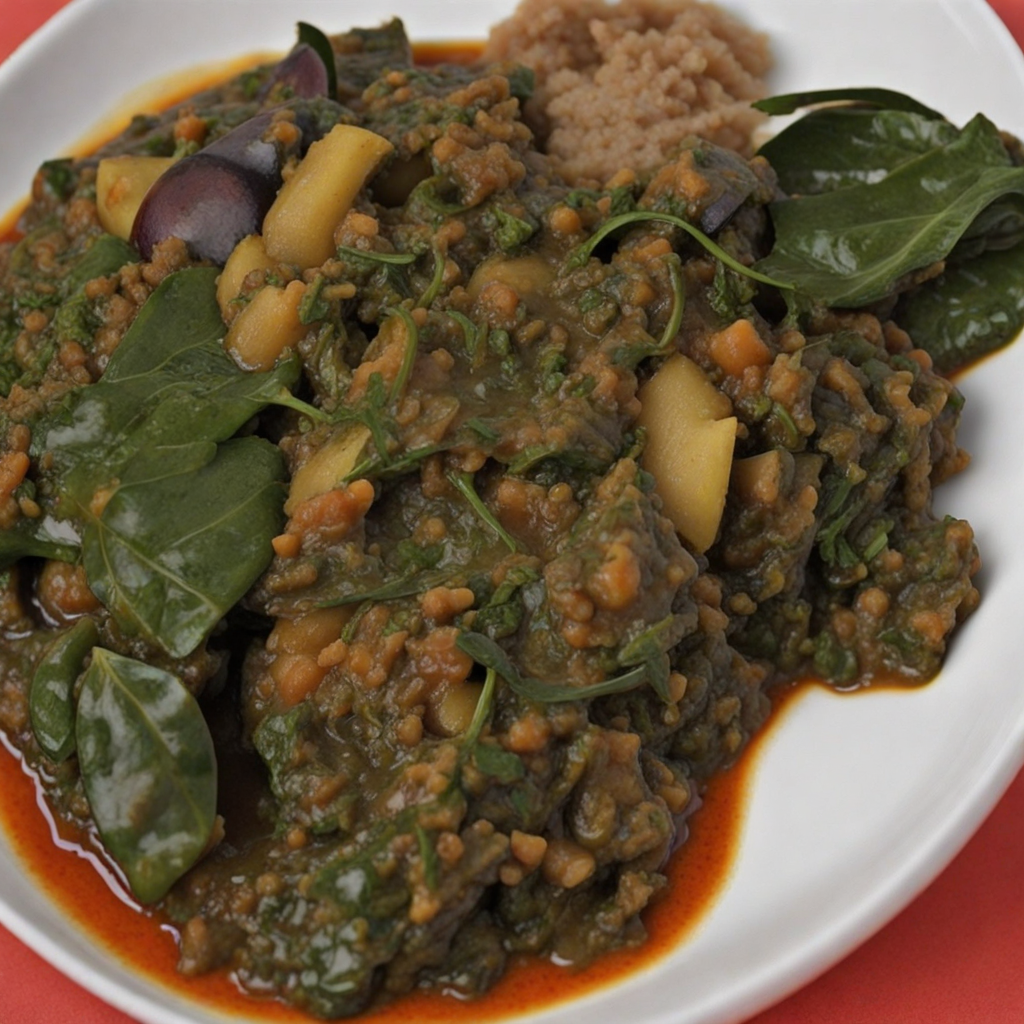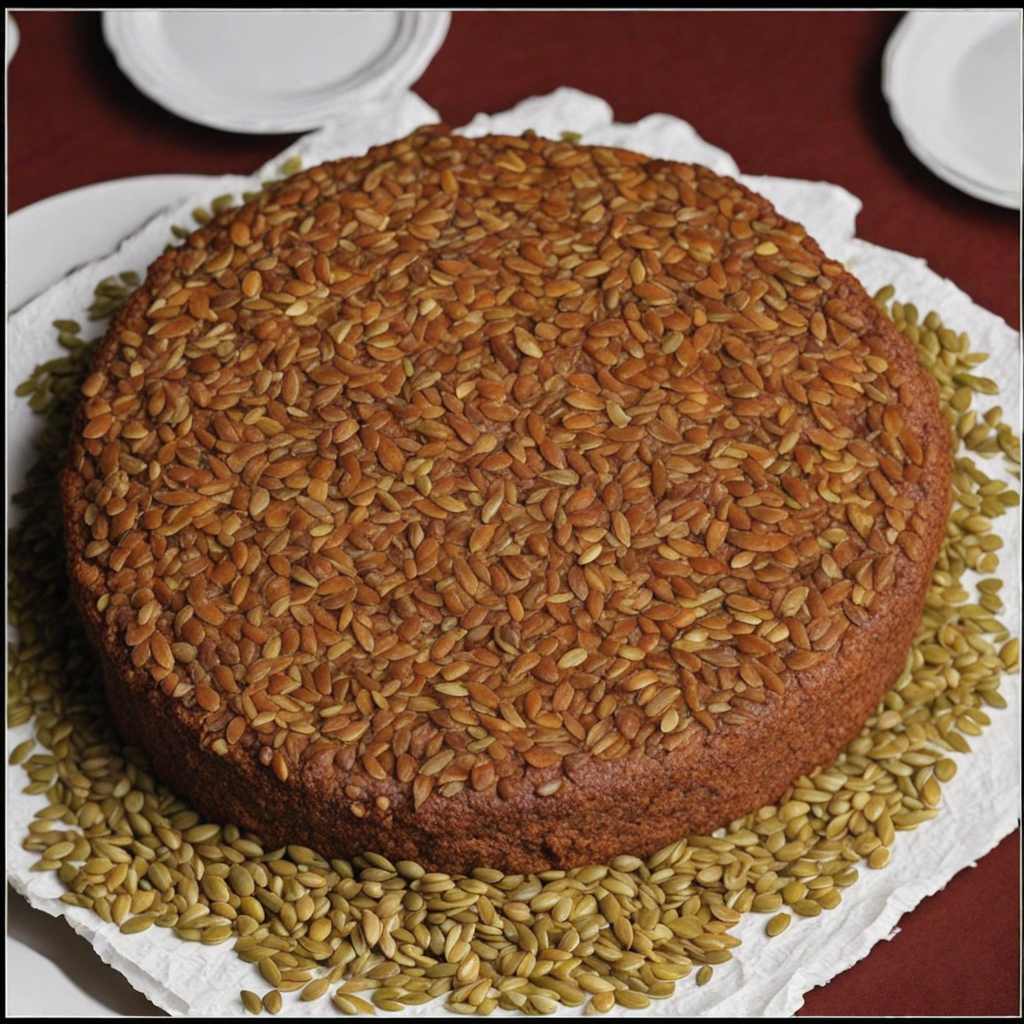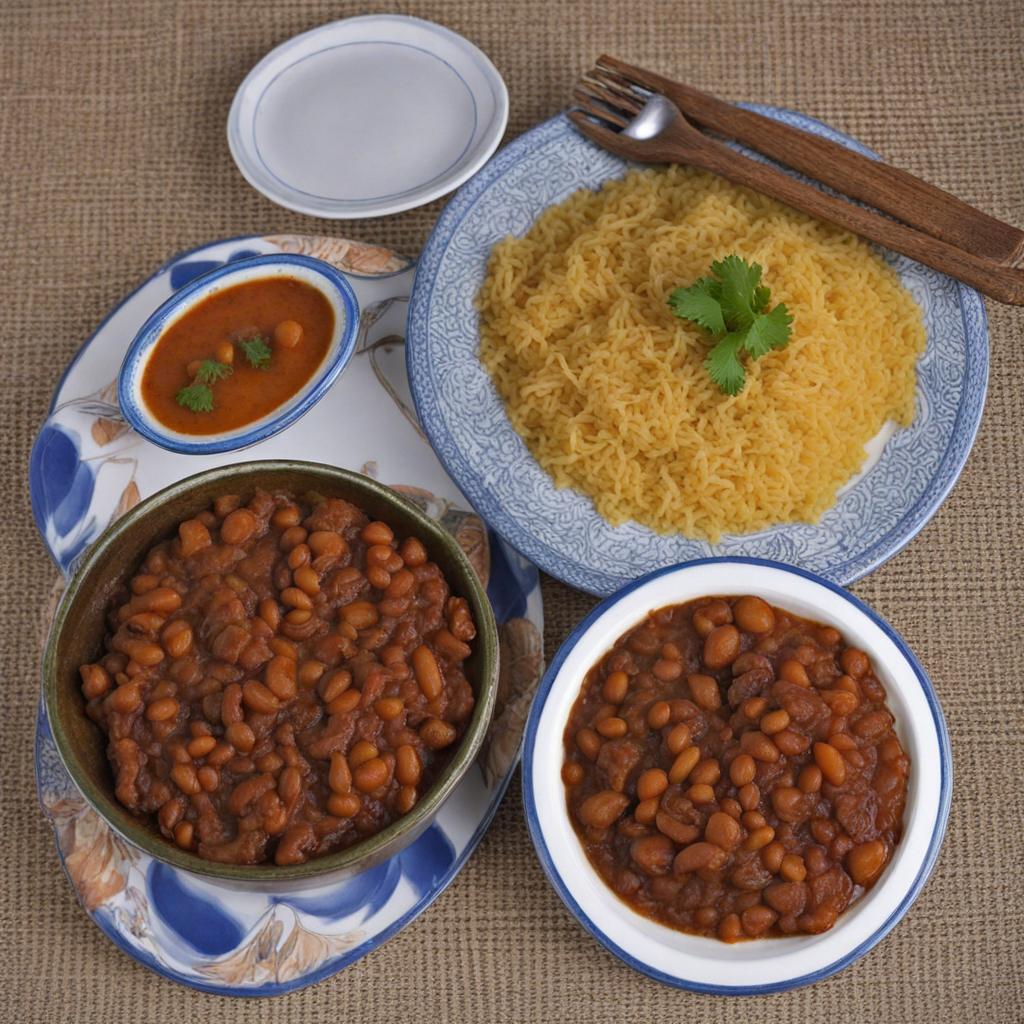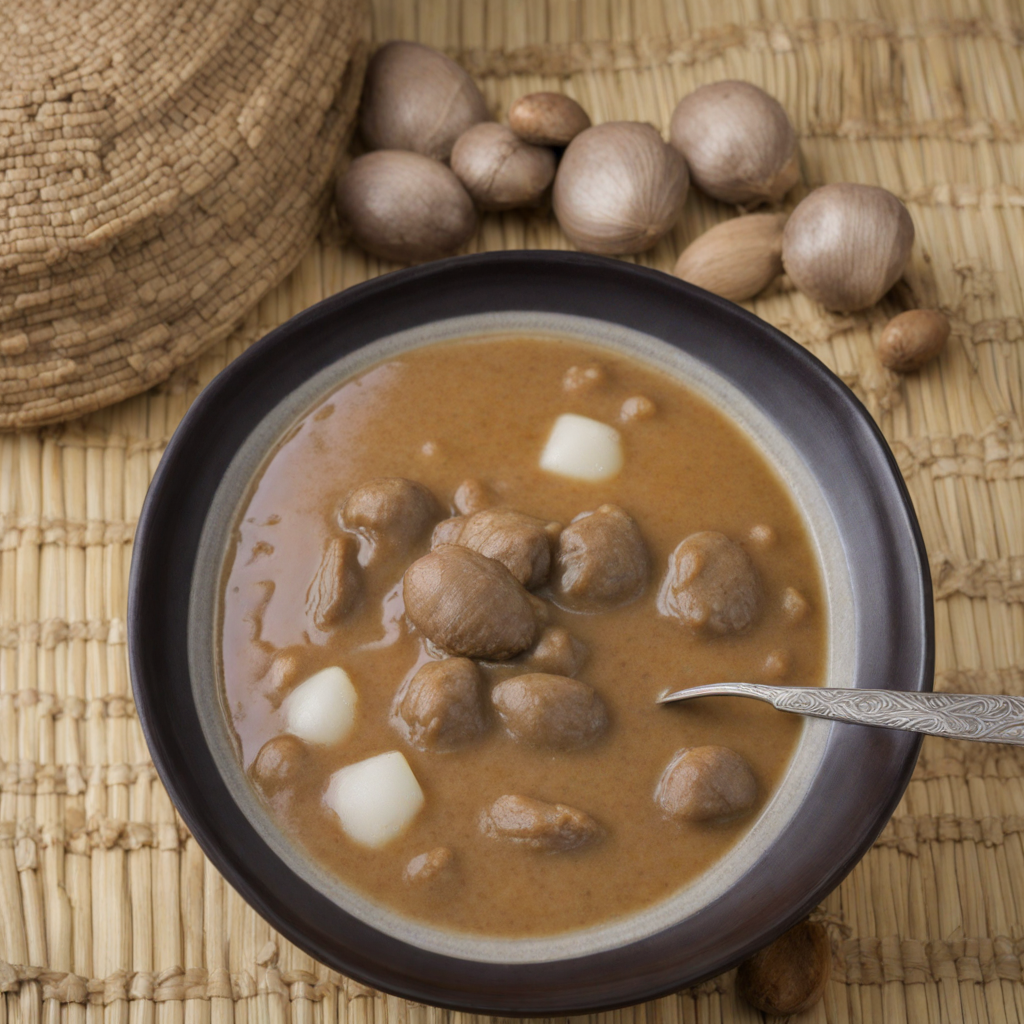Bugali
Bugali, a staple food from the Democratic Republic of the Congo, is a delightful and unique dish that embodies the essence of Congolese cuisine. Made primarily from cassava flour, it is a thick, porridge-like preparation that is both versatile and filling. The process of making bugali involves mixing the cassava flour with boiling water, stirring continuously until it reaches a smooth, dense consistency. This creates a neutral base that can accompany a variety of flavorful sauces and stews, making it a beloved choice for many meals throughout the region. One of the most appealing aspects of bugali is its ability to absorb the rich flavors of accompanying dishes. Traditionally, it is served with sauces made from vegetables, meat, or fish, often seasoned with local spices and herbs. The soft, slightly chewy texture of bugali contrasts beautifully with the hearty sauces, allowing for a satisfying culinary experience. Whether paired with a spicy peanut sauce or a savory vegetable stew, bugali serves as a perfect complement, enhancing the overall taste of the meal. In addition to its delicious flavor and texture, bugali is also a nutritious option, providing a good source of carbohydrates and energy. It is often enjoyed as part of communal meals, bringing families and friends together to share in the experience of eating. The simplicity and adaptability of bugali make it a cherished dish in Congolese households, embodying the warmth and hospitality of the culture. Discovering bugali is not just about tasting a new food; it is an opportunity to connect with the traditions and flavors of the Democratic Republic of the Congo.
How It Became This Dish
The History of Bugali: A Culinary Tradition from the Democratic Republic of the Congo Origins of Bugali Bugali, a staple food of the Democratic Republic of the Congo (DRC), is a type of porridge made primarily from cassava flour. This dish has deep roots in the culinary traditions of the Congolese people and embodies the interplay of agriculture, culture, and identity in the region. The origins of bugali can be traced back to the indigenous peoples of Central Africa, who have cultivated cassava for centuries. Cassava, a tuber native to South America, was introduced to Africa by Portuguese traders in the 16th century and quickly adapted to the African landscape, becoming a vital food source for many communities. The preparation of bugali is relatively straightforward. The cassava is processed into flour, which is then mixed with water and cooked over heat until it thickens to a smooth, dough-like consistency. This versatility allows bugali to serve as a base for various dishes, reflecting the diverse culinary practices found across the DRC and neighboring countries. Cultural Significance Bugali is more than just a food item; it is a cultural symbol that represents sustenance, community, and resilience. In many Congolese households, bugali is a daily staple that provides essential carbohydrates, helping to fuel the labor-intensive lifestyles of rural communities. It is often served with a variety of accompaniments, including vegetable stews, fish, and meat, making it a versatile dish that can adapt to seasonal and local ingredients. In addition to its nutritional value, bugali plays a significant role in social gatherings and ceremonies. It is often featured in communal meals during celebrations, religious events, and rites of passage, reinforcing bonds within families and communities. The act of preparing and sharing bugali fosters unity and cooperation, as it is typically made in large quantities to accommodate gatherings. Development Over Time Over the years, the preparation and consumption of bugali have evolved, influenced by various factors such as colonization, urbanization, and globalization. The Belgian colonization of the DRC from the late 19th century to the mid-20th century profoundly impacted agricultural practices and culinary traditions. The introduction of cash crops and the alteration of land use patterns led to changes in how cassava was cultivated and processed. Despite these changes, bugali remained a staple food, demonstrating the resilience of cultural practices amidst external influences. As urbanization increased in the latter half of the 20th century, the way bugali was prepared and consumed began to shift. In urban areas, the convenience of pre-packaged and instant cassava flour became popular, allowing city dwellers to prepare bugali more quickly than traditional methods. This adaptation reflects a broader trend of modernization, where traditional foods are reinterpreted to fit contemporary lifestyles. However, traditional methods of preparation and communal eating remain cherished in rural communities, where the cultural connection to food is strong. Globalization has also played a role in the evolution of bugali. As Congolese communities have migrated to other countries, they have brought their culinary traditions with them, introducing bugali to new audiences. In diaspora communities, bugali is often served at cultural gatherings, helping to maintain ties to heritage while also fostering intercultural exchanges. Regional Variations While bugali is primarily associated with cassava, regional variations exist that highlight the culinary diversity within the DRC. In some areas, such as the Kasai region, bugali may be made with maize flour, reflecting local agricultural practices and preferences. These variations contribute to the rich tapestry of Congolese cuisine and demonstrate how food can embody the identity of a particular place and its people. In the northern regions, where the influence of different ethnic groups is more pronounced, bugali may be accompanied by unique sauces and stews, featuring local ingredients such as groundnuts, palm oil, and a variety of vegetables. These adaptations showcase the creativity and resourcefulness of Congolese cooks, who often rely on locally available ingredients to enhance traditional dishes. Contemporary Relevance In contemporary DRC, bugali continues to hold significance as both a staple food and a cultural symbol. As the country grapples with issues of food security and economic challenges, cassava remains an essential crop for many families. The resilience of bugali as a food source reflects the broader struggles and triumphs of the Congolese people. Moreover, initiatives aimed at promoting traditional agricultural practices and food sovereignty have emerged, recognizing the importance of local foods like bugali in maintaining cultural heritage and fostering community well-being. These programs often emphasize the nutritional benefits of cassava and encourage sustainable farming practices to ensure that future generations can continue to enjoy this vital food. Conclusion Bugali is much more than a simple dish; it is a reflection of the history, culture, and resilience of the Congolese people. Its origins in the agricultural practices of Central Africa, combined with its significance in social and communal life, highlight the deep connections between food and identity. As the DRC continues to navigate the complexities of modernity and globalization, bugali stands as a testament to the enduring nature of culinary traditions and the vital role they play in shaping cultural narratives. Through the lens of bugali, we can appreciate the rich culinary heritage of the DRC, celebrating the flavors, stories, and resilience that this humble dish embodies. Whether enjoyed at a family meal, a community gathering, or as part of a cultural celebration, bugali will undoubtedly continue to nourish both body and spirit for generations to come.
You may like
Discover local flavors from Democratic Republic Of The Congo


